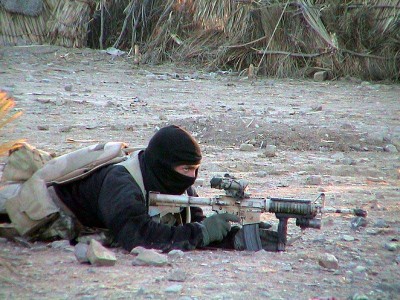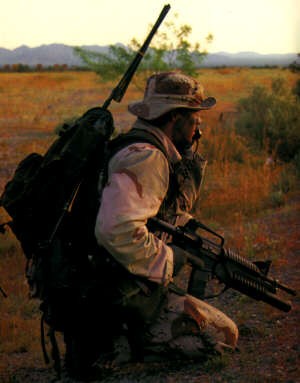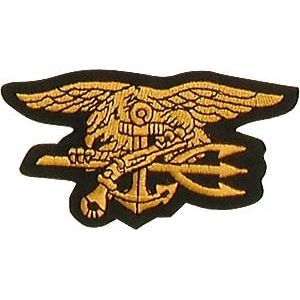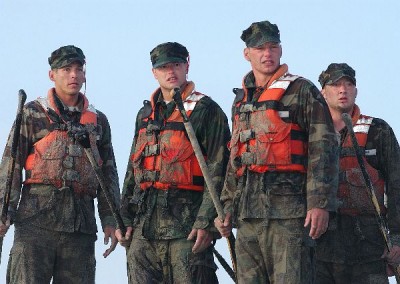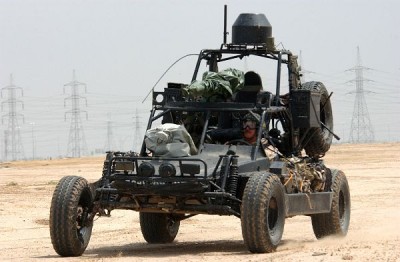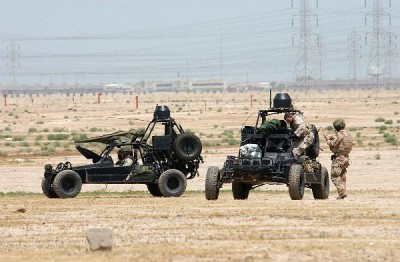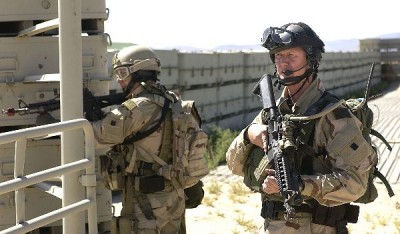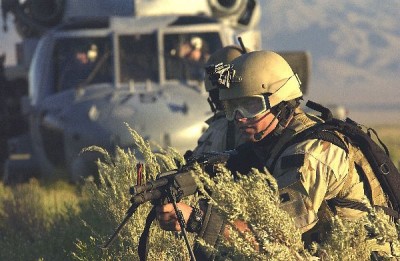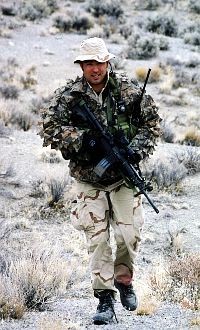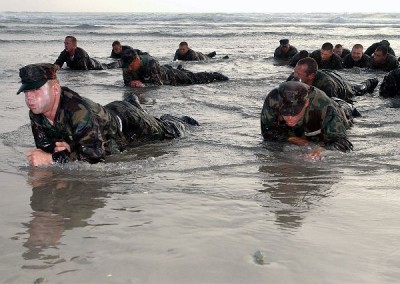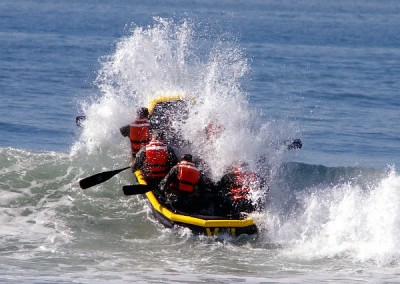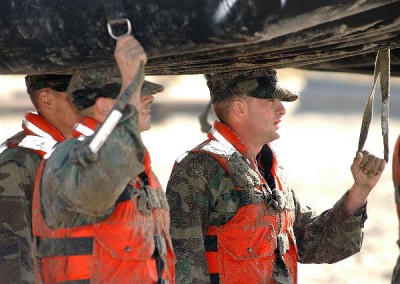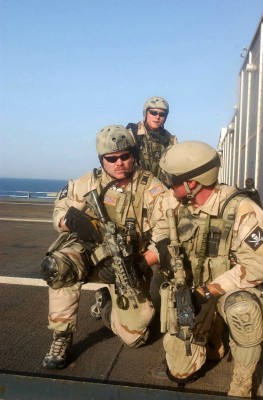Formation and organization
The name SEAL is actually a composite of the abbreviations of the words Sea, Air and Land, which actually refers to the environments in which these special forces are capable of fighting.
Their predecessors were the diving demolition and engineer units of World War II. These units were tasked with destroying enemy ships in harbors, clearing landing beaches of obstructions, and surveying the coastline and its suitability for invasion. These units also served in the Korean War.
The transition from purely diving units to special forces, capable of deploying in any environment, took place during the Vietnam War. Initially, the units only gathered information on enemy movements along rivers and marshes. Gradually, however, they began to specialize in actions of searching for and destroying enemy equipment and depots. To this were added attacks on the smaller bases of Communist troops and the general making life difficult for them. In these actions, the SEAL units did not disappoint and became famous for their many actions against the enemy.
After the Vietnam War, almost all American Special Forces were disbanded, such as the Rangers. The SEALs proved to be very successful and remained in service after the war and their ranks continued to grow.
Today, SEAL units are divided as follows: the U.S. Navy has special operations forces that are divided into two groups or sectors- those operating in the Pacific theater and those focusing on the Atlantic theater. The Pacific group is based at Coronado Air Force Base near San Diego, California. Pacific is based at Little Creek Air Force Base near Norfolk, Virginia. The groups each have two SEAL task forces and then other units, such as units designed to deploy to riverine areas, units with boats, sea scooters, etc.
The most basic cell of SEAL units is the squad, usually made up of 4 men, capable of deployment. Four squads make up a platoon, of which there are five in an operational SEAL detachment.
Thus, a SEAL detachment consists of 183 members (27 officers and 156 enlisted).
In addition to the detachments serving in the above two groups, there are smaller units stationed in detachments in Italy, Scotland, the Philippines, and many Allied countries, ready for immediate deployment in the vicinity. There is also a Delta Force naval component, attached to the SEALs and focused on counterterrorism.
Soldiers are transported to the vicinity of their deployment location on aircraft carriers, and from there they are flown either on fast boats or helicopters. The Navy also uses the option of transporting SEALs in 3 combat-class submarines that are specially equipped and prepared to offload troops into boats.
Armament:
As U.S. Army Special Forces are deployed around the world in defense of the country or NATO or UN interests, they must be first-class equipped. "Uncle Sam" invests annually in equipping these soldiers to be able to counter the ever-increasing threat of terrorism. That is why only first-class material is used to equip them. As a base, they use the US Army's classic assault rifle M-16 A2, or its smaller version Colt M4, which, like the M-16, allows the M203 40 mm grenade launcher to be mounted underneath. Next are the SAW M249 machine guns, the phased-out M60 and its shortened version, the M60 E3, the H&K MP5 submachine gun, pump-action shotguns. For the watery-eyed snipers, they use Barret and McMillan sniper rifles in 12.7 mm caliber, the M21 and M14 rifle. The official U.S. Army M-9 pistol was rejected by the SEALs. This was because when using oversized ammunition, the gun's breech often cracked and flew off, causing dangerous injuries to members of the "Seal″ as SEAL units are also nicknamed (the word Seal means seal in English; author's note J). Preference was given to the 9 mm SIG-Sauer pistol or the veteran of many wars Colt M 1911, which still performs well with the .45 caliber (11.43 mm). In addition to American weaponry, members of the One Hundred have access to almost every weapon available.
Because SEAL units are designed for special missions where secrecy is a concern, they are not usually equipped with a variety of rocket launchers, nor mortars or similar heavy weaponry. On special operations where silence is not a concern, units can and do load up and are willing to mount AT-4 anti-tank missiles, various .50 caliber heavy machine guns, and various grenade launchers on road vehicles such as FAV all-terrain buggies. Of course, the latest guidance systems, night vision systems, thermal imaging, various types of grenades, parachutes, closed-circuit oxygen diving suits, Zodiac rubber dinghies, Sea Fox floatplanes, and jet skis ...
Operations:
In 1983, during operations in Grenada, one detachment of "Seals" was deployed, along with the 82nd Airborne Division, Rangers, and Marines. During the invasion of Panama, they were tasked with destroying President Noriega's plane at Paitilla Airport. However, the commandos were surprised by heavy defenses and, in an uncovered area of the airstrip, came under heavy fire from the Guardsmen guarding the plane. After a fierce fight, the aircraft was destroyed by a rocket launcher. After the fight, 4 dead "seals" were left on the battlefield and many were wounded.
They also participated in Operation Desert Storm, where they used charges and small arms fire to convince Iraqi troops that an American invasion had begun on the southern Kuwaiti coast. This was not true and thus made things easier for the real allied troops who were then attacking the southern Iraqi defenses. With this operation they proved that even a small force of soldiers (6 men in the aforementioned operation) could hold off an enemy outnumbered many times over.
Training:
In order to pin on the Trident badge, the SEAL unit's insignia, a volunteer must pass an extremely physically and mentally demanding selection process from among many applicants. Only soldiers who have successfully completed Marine Corps training are allowed to enter the 15-week entrance test. The first stage, lasting 6 weeks, is aimed at testing the physical fitness of candidates for admission. On the daily agenda are long-distance endurance runs, long-distance swimming, etc. The last sixth week is also called the hell week because the trainees have only a few hours a day to sleep. The rest of the week is taken up with constant running, marching, swimming in cold water at night, various exercises done in the water, running with a rubber dinghy. After passing this test, the second stage begins, consisting of survival training, orientation in the terrain, escaping from captivity, the use of weapons and explosives, a diving course, plus constant running and swimming.
The third stage teaches coastal exploration, medical knowledge, combat tactics, demolition work. This is followed by paratrooper training, which is taught at the Rangers unit base at Fort Benning, Georgia. They practice the HALO jump technique, which is used in jumping from high altitude and opening a parachute low to the ground. This technique is mainly used to surprise the enemy. They also go through a course of classic jumps of immediate parachute opening- HAHO.
And as a final sieve, a final tactical and combat program serves as the final course, in which all the learned knowledge is used and the emphasis is on cooperation between individuals.
After completing this course, which 50 to 75% of applicants do not pass, successful adepts pin on their Trident badge and are confident that they are superbly prepared for future operations.
Like all Special Forces operations, SEAL Team operations are classified. However, the U.S. government has now partially declassified the conduct of earlier operations. In these documents, we can learn about how these air-sea-land forces performed in the operations they were entrusted with.
